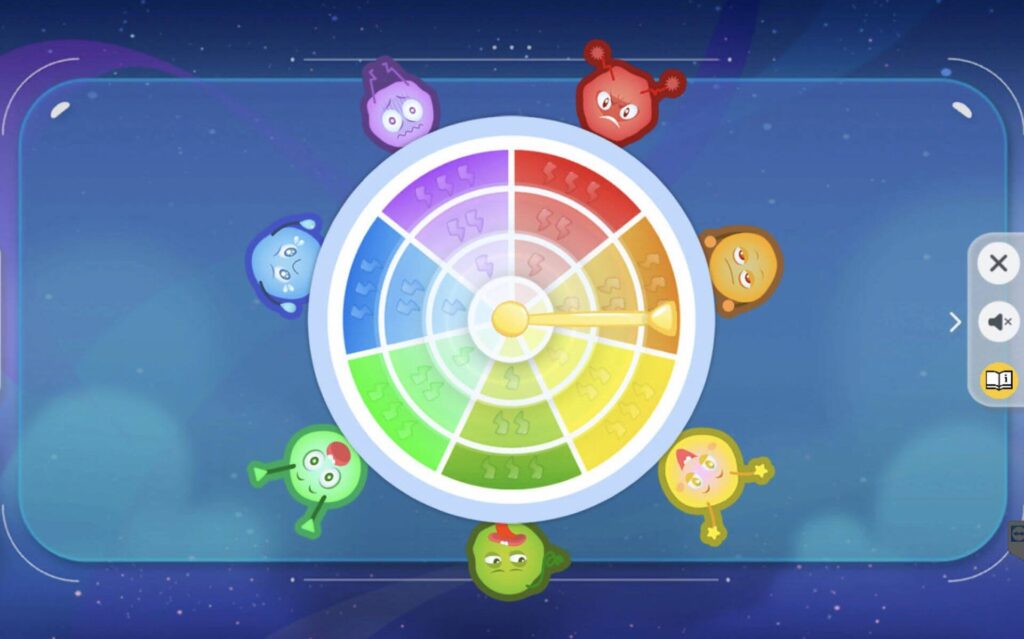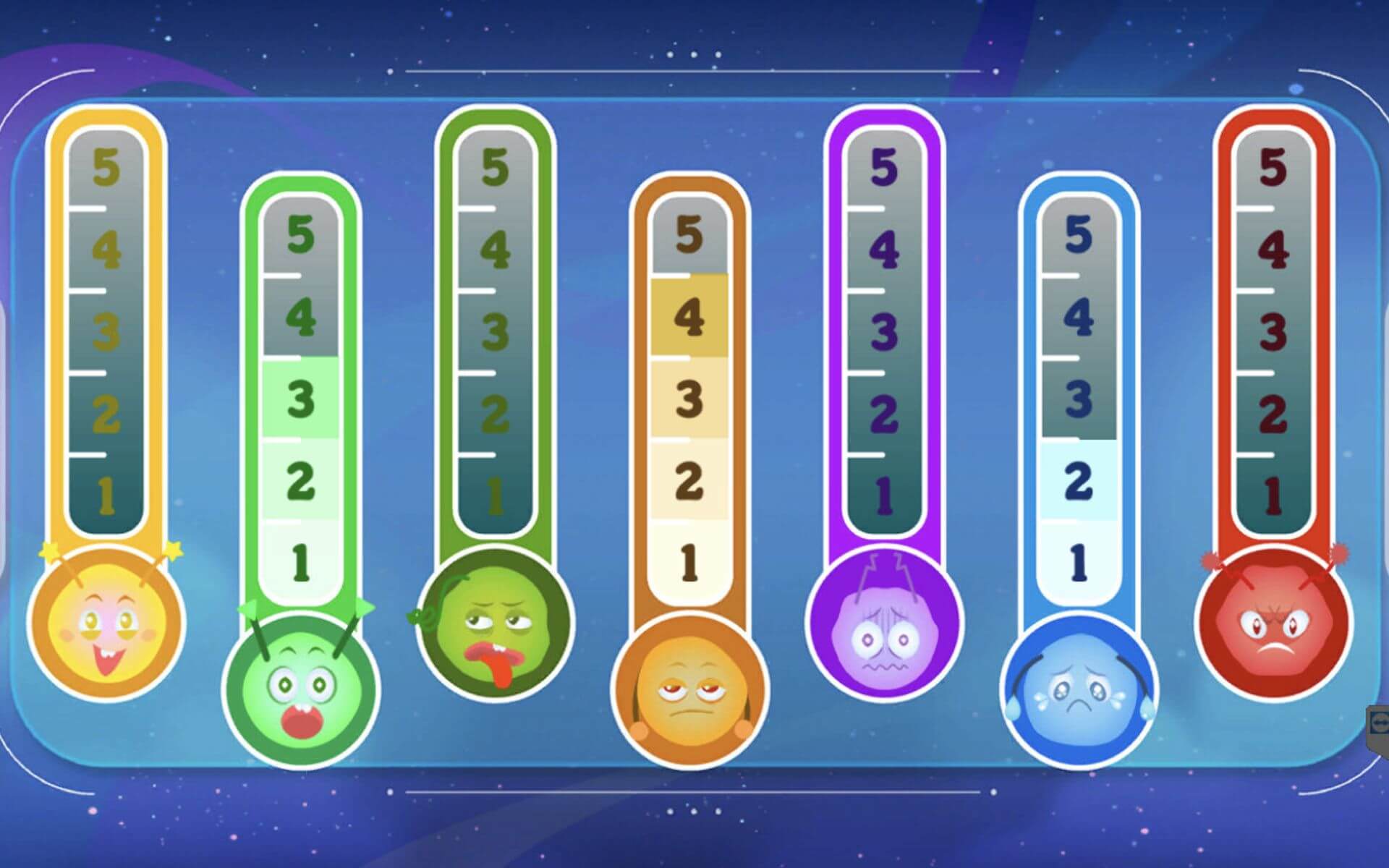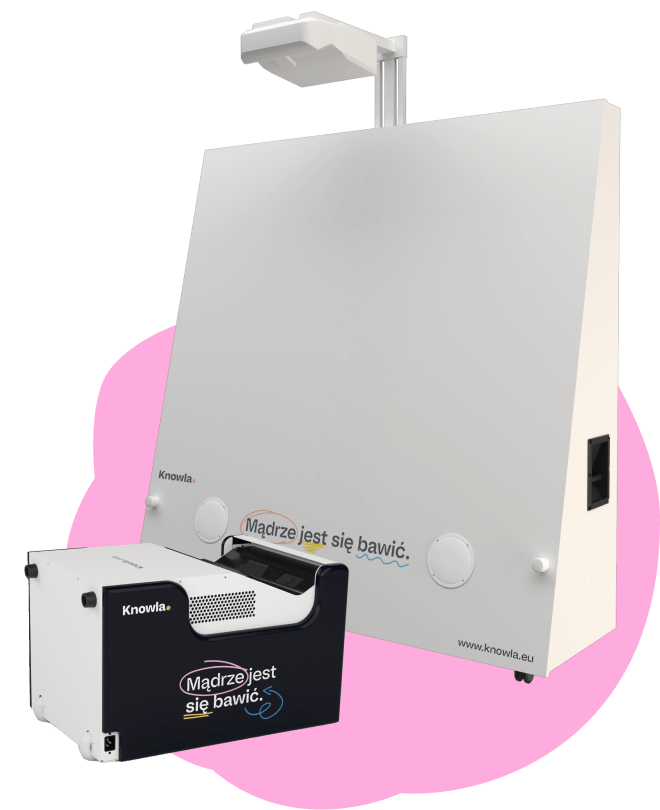Aktywności Koło Uczuć i Termometr Uczuć z Planety Emo, umożliwiają dzieciom nie tylko identyfikację i komunikację ich emocji, ale także naukę o ich zmienności i wpływie na codzienne interakcje. Poprzez interaktywną zabawę uczniowie uczą się, jak ważne jest otwarte rozmawianie o swoich uczuciach oraz jak można rozwijać empatię i lepsze relacje z innymi. W tym artykule znajdziesz konkretne pomysły na wykorzystanie aktywności Knowla i poznasz korzyści, jakie niesie za sobą ’emo-edukacja’.
Koło uczuć i Termometr uczuć w Planecie Emo
Na urządzeniu Knowla wybierz Planetę Emo i odszukaj aktywność Koło uczuć lub Termometr uczuć.
W obu aktywnościach znajduje się siedem różnych emocji: radość, smutek, złość, strach, zdziwienie, wstręt i znudzenie, które zostały wybrane na podstawie koła emocji Kaitlin Robbs.

Na początek zachęć uczniów do otwartości oraz do dzielenia się emocjami w naturalny sposób. Dzieci wchodzące do klasy zaznaczają odpowiednie pole na kole lub termometrach i dzielą się swoimi aktualnymi odczuciami. Wytłumacz, że każda z emocji jest potrzebna i nie należy się ich wstydzić.
Jak działa Termometr uczuć i Koło uczuć? W obu aktywnościach możesz wybrać dowolną emocję oraz jej natężenie. Naciśnij na odpowiednie pole, a termometr się zapełni do odpowiedniego poziomu lub strzałka przeniesie się we wskazane miejsce koła.
Aktywności mają też kilka dodatkowych funkcji. W panelu bocznym możesz ustawić czy widok ma być kolorowy, czy czarno-biały oraz czy na termometrach mają się pojawić cyfry określające natężenie. Na kole możesz zaznaczyć tylko jedną emocję, natomiast na termometrach emocje można zaznaczać niezależnie od siebie.
Porozmawiajmy o emocjach
Jeśli po zaznaczeniu danej emocji, dziecko będzie miało ochotę, to może powiedzieć o przyczynie swojego samopoczucia. Zachęć je do głębszych rozmów przez zadawanie dodatkowych pytań. Zaproponuj pomoc lub radę.
Klasa powinna być dla uczniów bezpieczną przystanią. Nikogo nie należy zmuszać do dalszych wyjaśnień, a decyzje dzieci powinny zostać uszanowane.
Emocje zmieniają się przez cały dzień
W ramach zajęć plastycznych uczniowie mogą samodzielnie wykonać z papieru koło uczuć. Dziecko wycina koło oraz strzałkę i rysuje podziałkę na emocję.
Całość spinamy ze sobą pinezką i korkiem lub gumką z drugiej strony. W trakcie dnia uczniowie będą zmieniać położenie wskazówki oraz monitorować jak, kiedy i dlaczego zmienia się ich humor.
Na koniec dnia można przygotować podsumowanie, w ramach którego uczniowie opowiedzą o swoich obserwacjach. Wszystko powinno przebiegać z uwzględnieniem ich chęć dzieci do rozmowy. Warto zastanowić się, co pozytywnie, a co negatywnie wpływa na nastrój konkretnej osoby w ciągu dnia oraz jak te emocje można wykorzystać, zapobiegać im lub rozładowywać.
Emo-zabawy są potrzebne
Każda emocja jest ważna i informuje o jakiejś potrzebie. Emo-zabawa ułatwia ich wyrażanie.
Emo-zabawa ma wiele zalet:
- pomaga zwiększyć swobodę w rozmowach o uczuciach i samoobserwacji;
- rozwija relacje międzyludzkie;
- rozwija empatię poznawczą;
- pozwala budować bliższe relacje z innymi ludźmi;
- daje młodym ludziom odwagę, by poprosić o pomoc;
- kształtuje rozpoznawanie emocji u innych;
- wzmacnia rozwój empatii.


